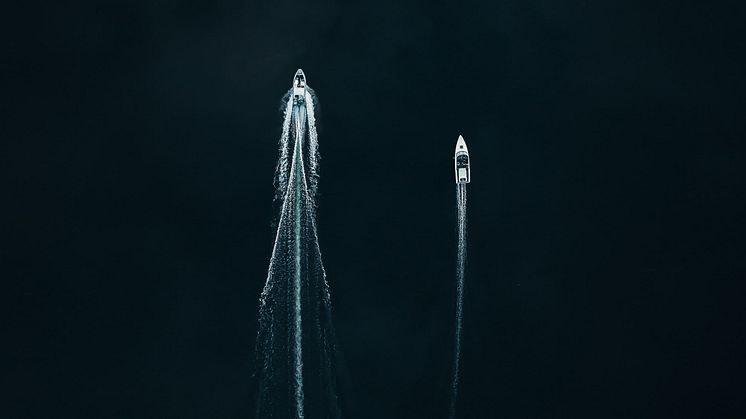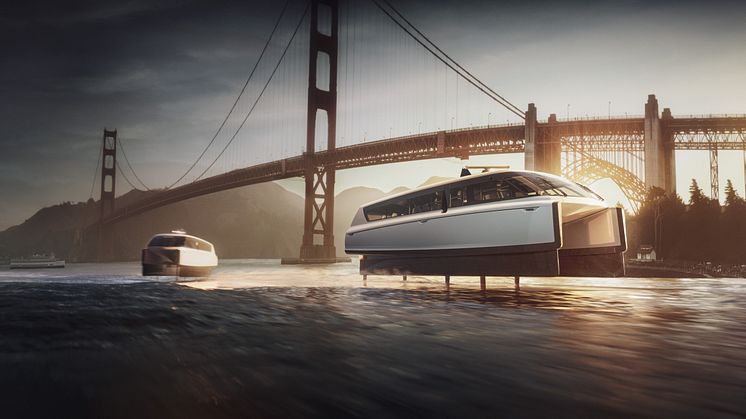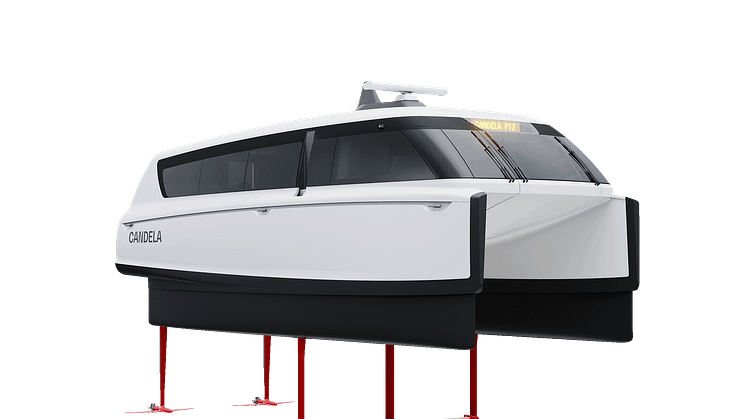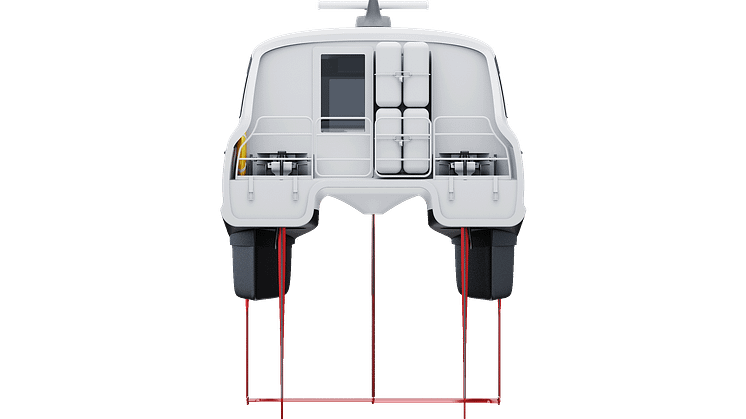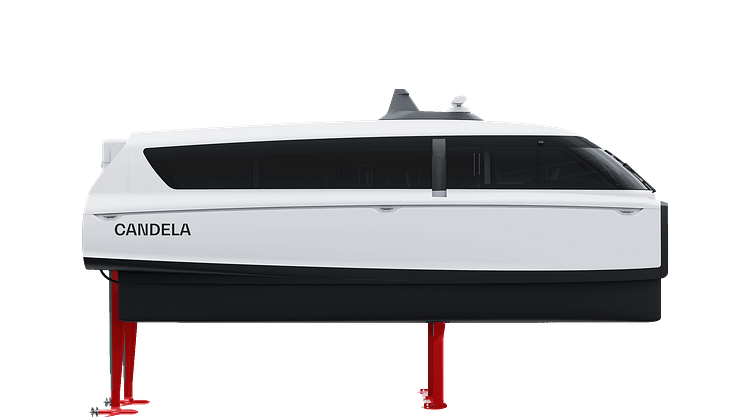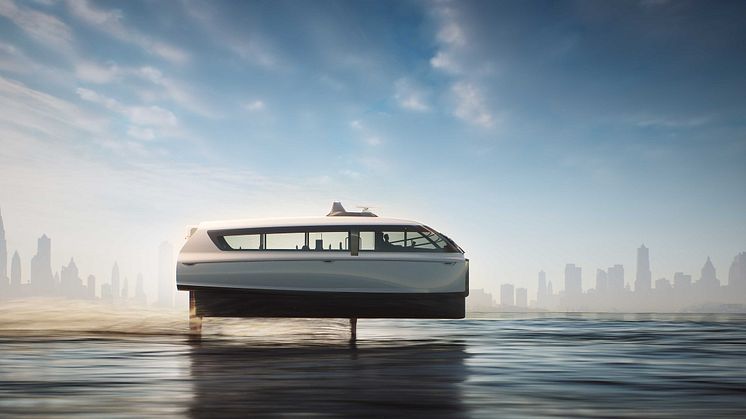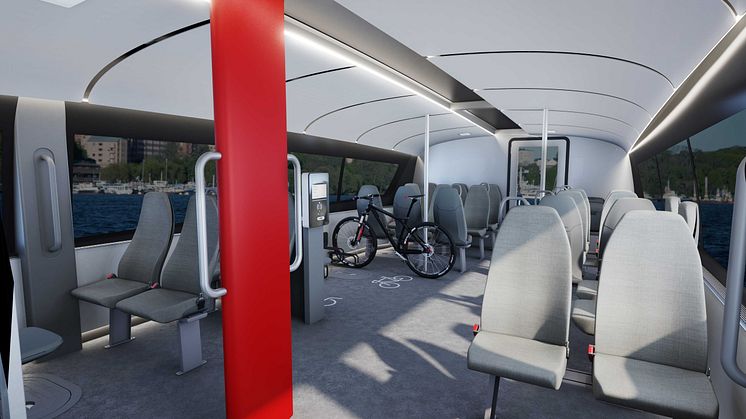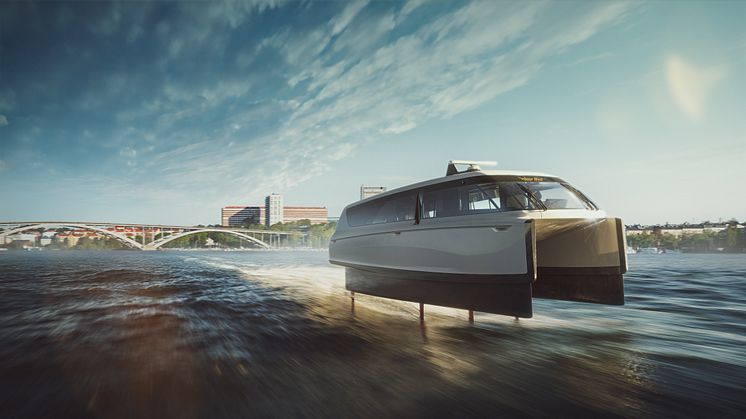
Press release -
Ship emissions can be cut by 97.5%, by switching to foiling electric vessels, says Swedish study
A study from The Royal Institute of Technology in Stockholm says emissions from ships could be reduced by 97.5% by switching from diesel vessels to a new type of electric hydrofoil ship that will be introduced in Stockholm next year.
In April 2024, the Region of Stockholm will sea trial the fastest and longest-range electric ferry to date; Candela P-12 Shuttle, the world’s first hydrofoil passenger ship.
In addition to being fast and comfortable, a new study from Stockholm’s KTH Royal Institute of Technology suggests that ships with electric hydrofoil technology could reduce emissions from marine transport by 97.5% compared to current diesel vessels.
In Sweden, domestic shipping emitted roughly 680,000 tonnes of Co2 in 2020, more than trains, buses and domestic flights combined.
The country's leading technical university, KTH, has compared the Candela P-12 Shuttle with the city's diesel-powered vessels in a life cycle analysis. The analysis examines the different stages of the product's life; extraction of raw materials, manufacturing and use phase until the product is no longer used, and must be disposed of or recycled. The study shows that over a lifetime of 30 years, the carbon footprint of a Candela P-12 Shuttle is 97.5% lower than that of the compared diesel ships.
According to the authors, the study is the first to demonstrate the difference in environmental impact between electric hydrofoil ferries and traditional ferries. It shows that electric flying ferries can play a significant role in the transition to more sustainable maritime transport.
- The combination of using hydrofoils and being powered by electricity is the main factor in lowering emissions. And since the Swedish electricity grid is almost free of carbon dioxide emissions, this type of ship has a clear advantage, says Felix Glaunsinger, one of the authors of the study.
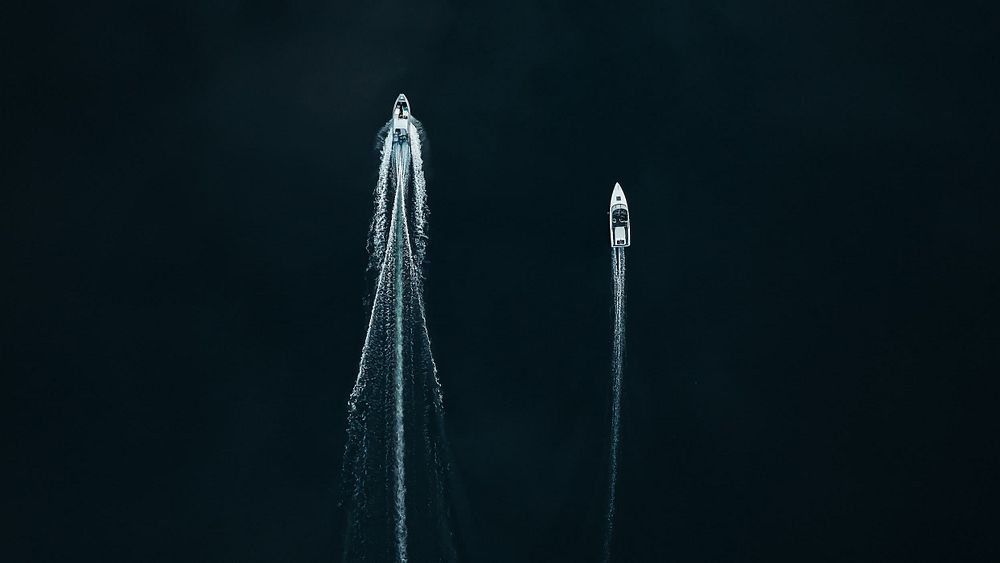
The hydrofoil technology means that the boat is lifted on wings that ’fly’ under water, eliminating water resistance from pushing the hull through water. The hydrofoils reduce energy consumption by 80% compared to conventional ships. When the 30-knot Candela P-12 enters sea trials in 2023, it will be the fastest electric ship in the world and also the fastest passenger vessel in the Stockolm public transport fleet. With a range of 60 nautical miles, it can cover the archipelago's longest routes. Since the flying ferry doesn't create any wake, the city has granted it an exemption from the speed limits, cutting travel times from 55 minutes to 25 minutes on the maiden route from the suburb of Ekerö to central Stockholm.
The KTH study also shows that the Candela P-12 Shuttle has a low carbon footprint from production compared to the diesel ferries examined – an interesting finding, since other electric vehicles, such as cars, often have a heavier carbon footprint from production than fossil fuel-driven equivalents due to the negative impact of manufacturing the batteries.
- Just like aircraft, our vessels are made to be as light as possible to maximize the number of passengers and performance. A welcome side effect is that we’re able to use smaller batteries and less raw material, which in turn means a lower negative climate impact, says Erik Eklund, head of Candela's commercial vessels.
Worldwide, ships account for around 3% of global greenhouse gasses, comparable to the global aviation industry’s emissions. Emissions are expected to rise considerably in the coming years despite the International Maritime Organisation’s ambition to cut ships’ carbon intensity by 40% by 2030.
Link to KTH Royal Institute of Technology's study:
https://www.kth.se/en/om/nyhet...
High resolution press pictures of Candela P-12 Shuttle:
Related links
Topics
Candela is a Swedish electric boat company whose mission is to speed up the shift to fossil fuel-free lakes and oceans. Using computer-guided hydrofoils – underwater wings that lift the hull above the surface, thereby overcoming the friction of water – Candela’s craft use up to 80% less energy at high speeds than traditional motorboats.
In addition to longer range and better performance than other electric boats, Candela’s craft have several benefits over conventional ICE boats. With minimal noise, no wake and zero emissions, Candela’s craft combine a light environmental footprint with better passenger comfort and a thrilling drive experience.
Candela was founded in 2014 by engineer Gustav Hasselskog and introduced its first production model, Candela C-7, in 2019. With a range of 50 nautical miles at 20 knots, the C-7 set several world records for electric boats. The limited production run of 32 units ended in 2021.
In 2021, Candela launched the bigger, high-volume production Candela C-8, which is designed to make electric boats mainstream. With space for eight passengers, it has a range of 50 nautical miles at 22 knots and a top speed of 30 knots. Powered by the Candela C-POD, an electric pod motor developed in-house by Candela’s 50-strong engineering team, it is 400% more efficient than other powerboats on the market. With more than 150 units ordered to date, the C-8 is currently the best-selling electric premium boat.
In 2022, Candela is launching the Candela P-8 Voyager taxi boat and the P-12 Shuttle electric ferry, which will bring the company’s revolutionary electric hydrofoil technology to commercial vessels.


